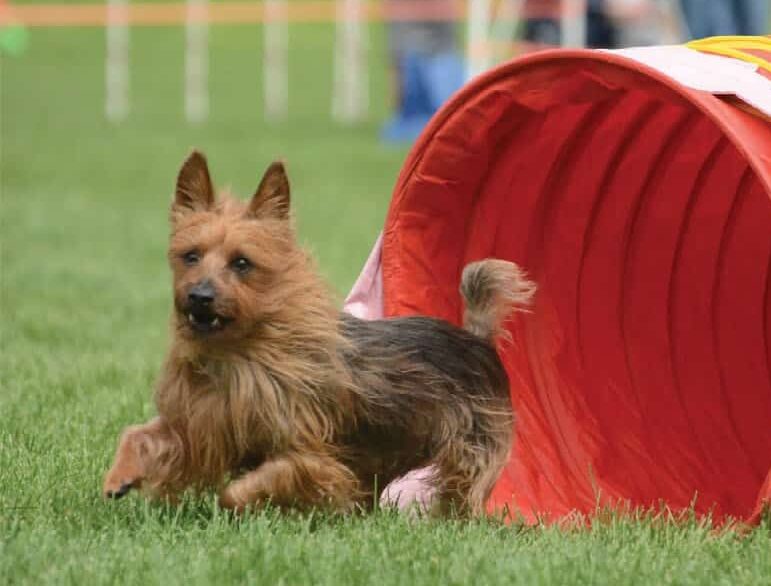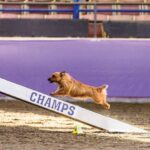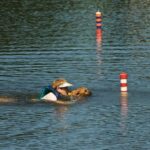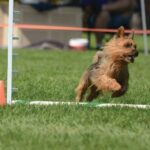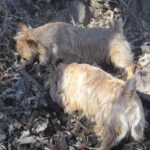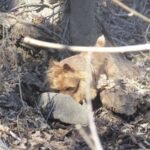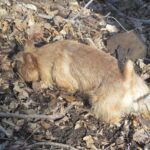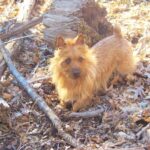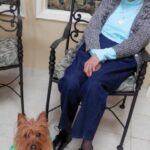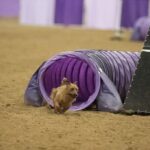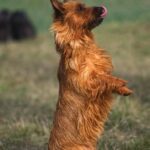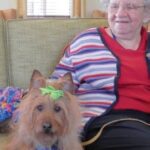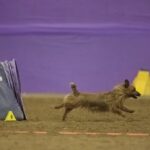In order to fully appreciate the abilities of the performance Australian Terrier (AT), one must consider the history and development of the breed which began when farmers in the outback needed a dog to match the difficult conditions of the Australian environment. Hot weather combined with dry barren conditions required a tough small dog with versatility— one able to do many jobs.
From the farmers perspective, the more tasks that a dog could perform, the more valuable the dog. Clearing the farms of disease carrying rodents, as well as removing other animals competing for resources was a necessary requirement , and one at which the Australian Terrier excelled. Warning of intruders and dispatching larger predators was also a necessary requirement.
However, of paramount importance was the need to clear the farms of venomous snakes. In order to achieve this, the dog needed to be fast, agile, fearless, and self-confident and possess the ability to work within a pack to achieve a common goal. Without cooperation and teamwork, the result could be fatal.
Their value in killing snakes was so great that children were taught to send the dogs into the bush after their toys instead of reaching into the shade where snakes were likely to be. Schoolteachers also were known to have several Aussies. The dogs were sent into the schoolhouse to clear the room of snakes and rodents. This ability to bond closely with his humans, as well as his small size and weather resistant coat led to these little dogs being allowed into the house to sleep on the hearth at night.
Today we find in the Australian Terrier an agile, quick, intelligent self-confident dog with a great desire to work with his humans to achieve a common goal.
The Australian Terrier, however, is not a dog that can be pushed around. His work ethic is excellent if you use proper training techniques. Positive reinforcement is a must and you must convince him that your desires are really his, or, at the very least, in his best interest before beginning structured training.
A puppy foundation class is an excellent way to connect with your dog while he learns to interact appropriately with other dogs and people.
He should learn such commands (or suggestions!) as:
- leave it
- come with me
- hold still
- quiet
- not ok to urinate
- watch me
- no sniff
- okay to meet another dog
- let’s go on
- wait
- release
- settle
Equally important are the fun commands:
- sniff
- go play
- release
- dig
- what is it?
- okay to urinate
- ok to jump
- tug and growl
- find the cookie
- speak
Once you have your connection, you can begin to strengthen the Aussies desire to work for you. Once your Australian Terrier has mastered the foundation class, you may want to train him in structured performance venues.
Agility
Agility is an excellent area for the Aussies to showcase their abilities. It requires jumping, climbing, and weaving on a course that offers 16-20 obstacles to be performed in a specific order.
Agility requires an athletic, fast dog that takes direction well. It requires months to years of training, so the owner must be able to continually motivate the dog to perform many repetitions of an obstacle. Positive reinforcement must be used and motivators should be varied and novel. An unexpected toss of a favorite toy after a successful weave pole performance is as important as a cookie after the run. Keeping your Aussie guessing will keep him happy in his work.
Obedience and Rally
Obedience and rally are excellent for the Australian Terrier and his owner. Again, the repetitious nature of practice requires novel, frequent and unexpected rewards. Obedience is more structured than rally and therefore requires more practice. Rally is a form of obedience which allows a more relaxed approach to the performance. It allows the owner to talk to the dog and encourage his performance.
Tracking
Tracking is also a performance event that Australian Terrier dogs can compete in. This requires a dog that understands his job is to follow the scent and not the critters. Aussies seem to be able to follow direction and concentrate on the job at hand, as long as the reward equals the job. So a good reward is to take him out hunting as soon as the glove has been located.
Earthdog & Lure Coursing
Earthdog is the venue most Aussies are suited for. Following a rat scent down a hole and locating a rat at the end of the tunnel can be the ideal exercise an Aussie needs. In addition lure coursing for those that prefer above ground chase fits the Aussie to a T. For those for whom competition is not interesting, the Australian Terrier is particularly suited to therapy work.
Jack of All Trades
The typical Aussie loves children. They are study enough to interact with boisterous kids and small enough not to intimidate cautious children. Australian Terriers are also very good with the elderly, intuitively knowing how active or quiet to be. They are great in nursing homes.
All in all, the Australian Terrier is a cheerful willing terrier, one that values working with his human. If you foster a good working relationship with your Aussie he or she will reward you with any silliness you choose to impose on them. They do want to work closely in concert with their people, sleeping at night in bed with you and working during the day, side by side.
Gallery
Australian Terrier Dog Breed Magazine
Showsight Magazine is the only publication to offer dedicated Digital Breed Magazines for ALL recognized AKC Breeds.
Read and learn more about the versatile Australian Terrier dog breed with articles and information in our Australian Terrier Dog Breed Magazine.
Error embedding FlippingBook shortcode, please check the flipbook url. (https://digital.showsightmagazine.com/view/582734/)


